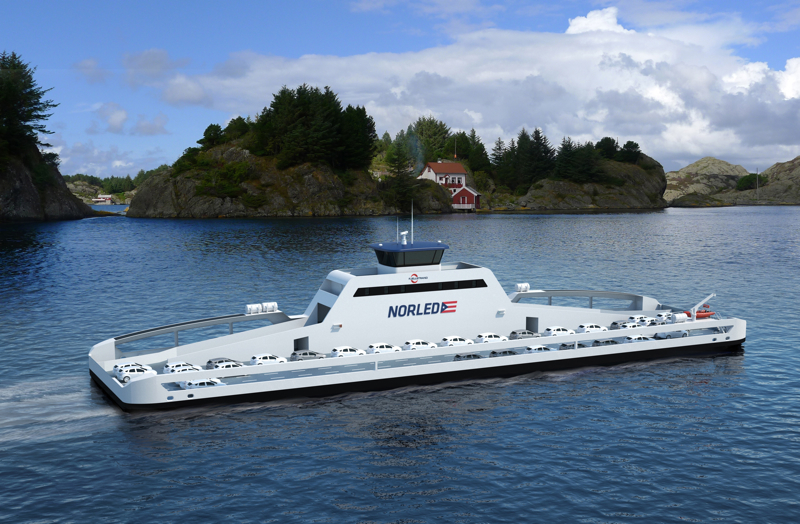World's first electrically powered car ferry


The ferry that lugs cars across Norway's largest fjord four times an hour hurls buckets of environmentally hazardous emissions into the air, including planetary-warming carbon dioxide and human choking nitrogen oxides.
But that should change in 2015, when shipping company Norled AS starts operating what appears to be the world's first electrically powered car ferry, co-developed by German industrial conglomerate Siemens and by Norwegian shipbuilder Fjellstrand A.S.
That should come as welcome news to the ecologically minded. The busy crossing between the villages of Lavik and Oppedal serves as a vital link on the western highway between Norway's second and third largest cities, Bergen and Trondheim. The 20-minute, 3-mile journey across the Sognefjord today burns 1 million liters of diesel a year, spewing 570 metric tons of CO2 and 15 metric tons of nitrogen oxides, according to a Siemens press release.
The new 80-meter long (262 feet) electric craft will be able to carry 120 cars and 360 passengers. To lighten its load and resistance, Siemens designed it catamaran style with two slim hulls built from aluminum rather than from heavier steel that's conventionally used. The aluminum perhaps helps make up for the battery, which itself weighs 10 metric tons.
The battery will power two propeller motors, and will recharge in 10 minutes from separate dockside storage batteries that themselves slowly recharge from the electric grid. The grid is not powerful enough on its own to re-juice the ship in such a quick turnaround.
The battery will require a total capacity of only 800 kilowatts, which is about half of the 1,500 kilowatt capacity in place on today's diesel-powered vessel, operated by shipping company Fjord1, which also submitted an electric design in a competition for the new contract run by the country's Ministry of Transport.
Exactly how much any electric from of transport cuts down on CO2 and other emissions depends on the source of the electricity. In Norway's case, the reduction should be significant, since the country gets almost all of its electricity from non-CO2 hydro processes.
Norway is also helping to develop alternative and safer forms of nuclear power, which like hydroelectricity is also CO2-free.
Images: Ferry from Siemens. Sognefjord from Wikimedia.
More Norwegian energy on SmartPlanet:
- Nuclear heat is on in Norway
- Norway ringing in nuclear thorium New Year, with Westinghouse at the party
- The shortest route: Russia ships gas to Japan via Arctic
- Solar: Norwegian would
- Osmotic power pushes closer to reality
This post was originally published on Smartplanet.com